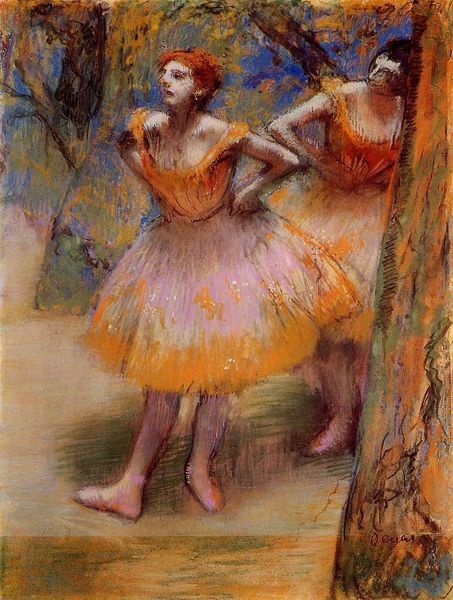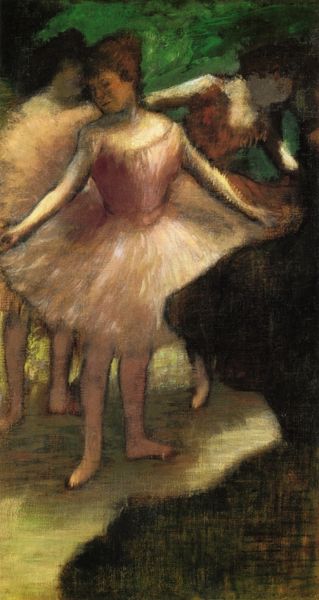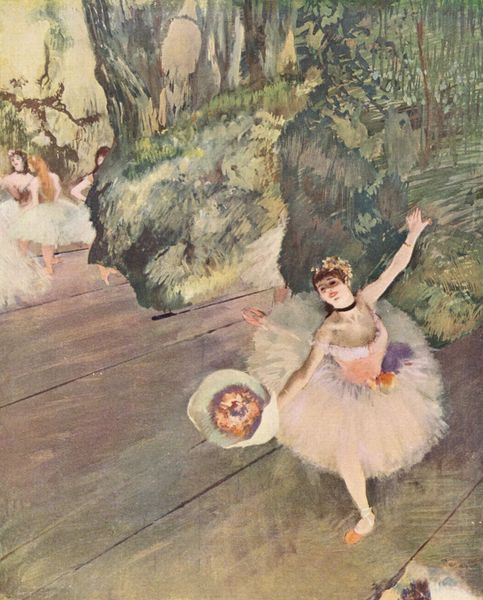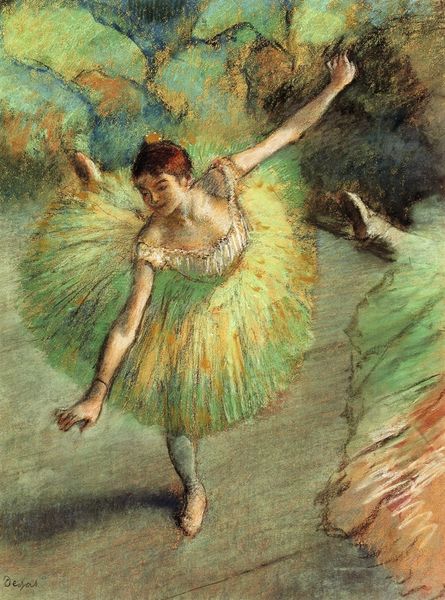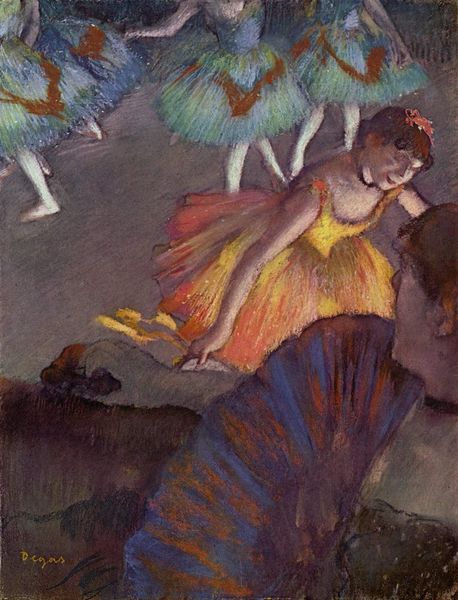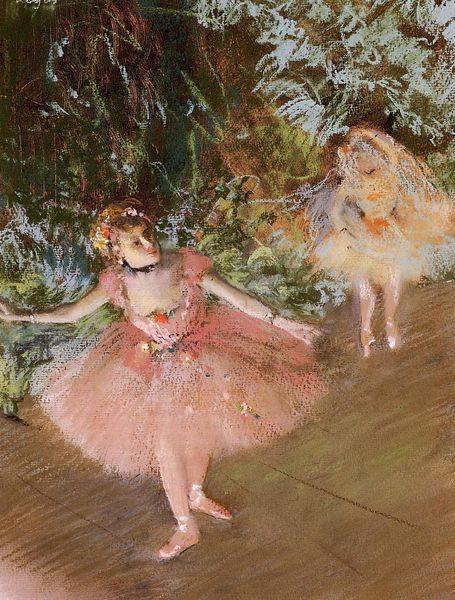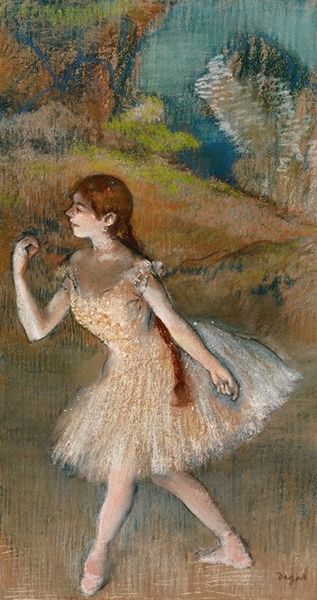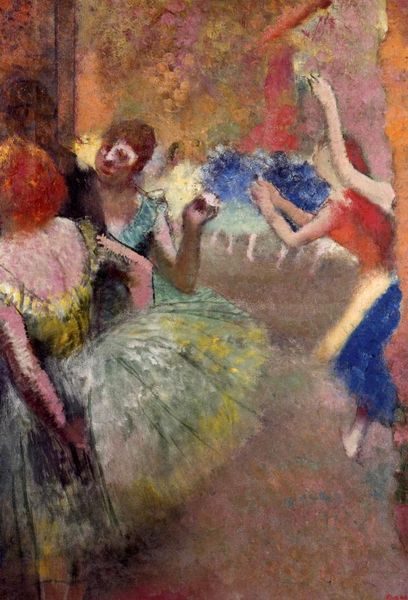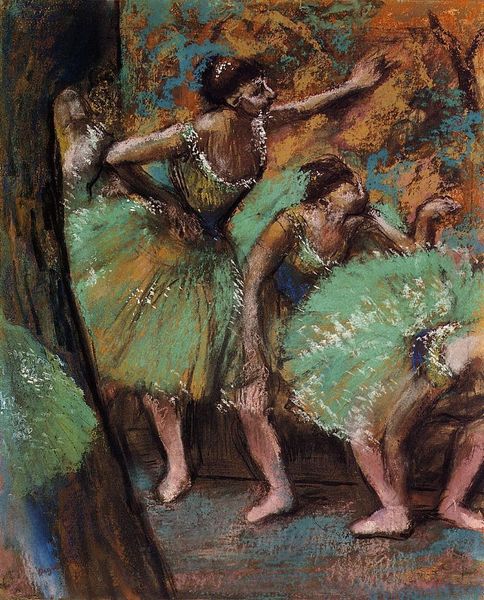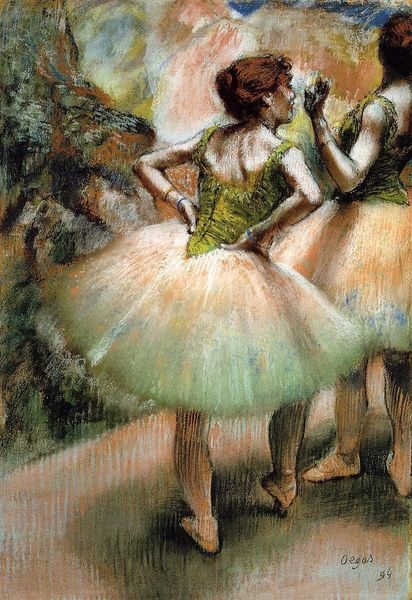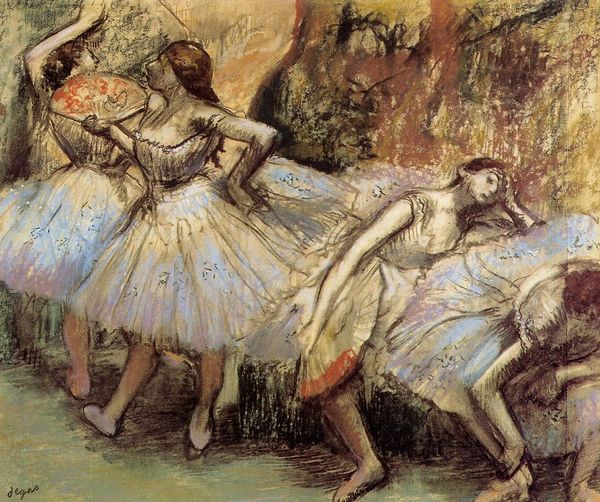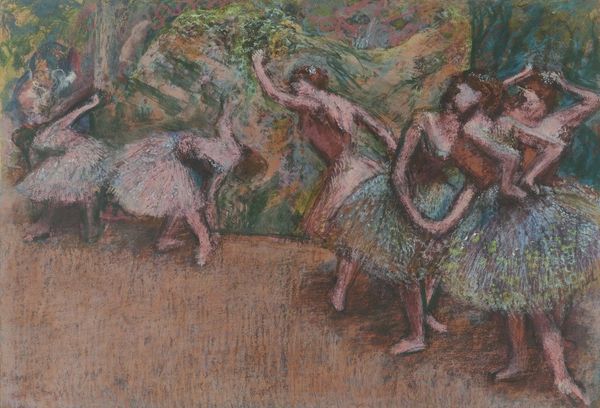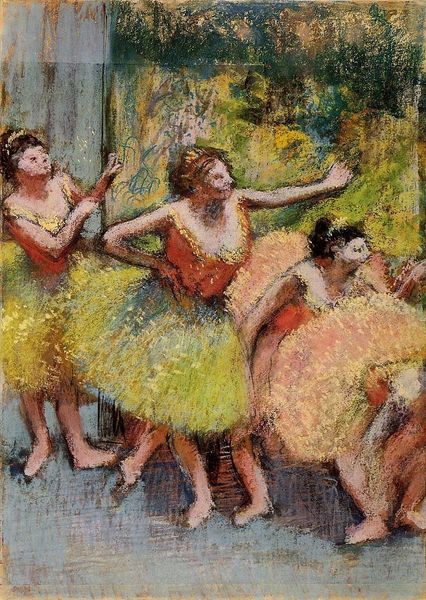
Copyright: Public domain
Editor: Right now we're looking at "Dancers", made around 1890 by Edgar Degas, and rendered with pastel. It has this incredible ethereal quality to it, doesn't it? The ballerinas almost seem to float. What's your take on this piece? Curator: What I see here is Degas continuing his project of representing modern life, specifically, women's roles in Parisian society. While seemingly beautiful, let's consider what it meant for these young women to dedicate their lives to ballet. How did the Opera shape their lives, their opportunities, even their bodies? Editor: So, beyond the pretty tutus, you see a kind of social commentary? Curator: Precisely. Think about the social context: The Paris Opera was a state institution. Ballet was a career largely available to those from working-class backgrounds. These dancers, performing for wealthy patrons, occupied a very specific, often precarious, position in the social hierarchy. Does that context shift your understanding? Editor: It does! I guess I was only focusing on the Impressionistic style and the fleeting moment captured, but that's fascinating. The stage then becomes a sort of… marketplace? Curator: In a way, yes. Their bodies and talent are commodities. And Degas, through his unusual compositions and unflinching gaze, reveals a glimpse of this reality behind the scenes. How do you view the piece now? Editor: Much differently, much more critically, but also more appreciatively. It’s not just capturing beauty, but also exposing something deeper. Curator: Exactly. Art often holds a mirror to society, reflecting both its beauty and its complexities, revealing the socio-political conditions of its time. It’s our job to consider what the image leaves out.
Comments
No comments
Be the first to comment and join the conversation on the ultimate creative platform.
